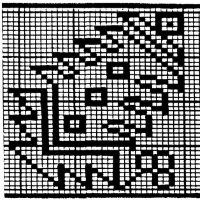In this blog post, we take you back 3000 years ago. Our journey to Yagcibedir Carpet is the common destiny of Anatolian carpets and kilims, where many love, longing, and happiness are embroidered stitch by knots. These carpets have the same characteristics as the oldest found carpet in the world. If you read our “Ultimate Guide to Turkish Rugs” post, you could remember this information. If you have not read it yet, we advise you to read it as well. However, for the ones who have read it, let us remind you, and for the ones who have not had a chance to read it yet, let us inform you in advance.
The “Pazirik” carpet, the oldest found carpet in the world, was found in a Turkish tomb in the Altai Mountains, which is currently exhibited in the Hermitage Museum in St. Petersburg, Russia. In terms of knots and weaving technique, Yagcibedir carpet is very similar to the “Pazirik” Carpet.
History of Yagcibedir Rugs

Let's go a little bit into the history of this rug first. The history dates back to before the Turks accepted Islam. As a result of the settlement movement, the nomads settled around Bergama in Western Anatolia. They fused with the understanding of art in the region and started to produce products bearing the effects of Seljuk art. These effects can be observed in the old examples of Yuntdag, Kozak, and Yagcibedir carpets, which were woven in this region and entered the literature as sub-branches of the Bergama carpet group.
So, this tribe, which is known as Yagcibedir now, was settled in 24 neighborhoods around Balikesir and Bergama. It is said that the region was once known as Yaycibedir (The Bower Bedir) because they produced bows for the army, and the regions' name has changed over time and evolved into Yagcibedir.
These people, who migrated from various places, settled in the region due to many reasons. The favorable climatic conditions, soil fertility, being a fringe principality of the area during the Seljuk period, and staying away from the administration were a few of them. Hence, Yagcibedir Carpet got its name from the nomads (Yoruk) of Balikesir Province, Sindirgi District. They were weaving carpets in the villages of Esmedere, Cakilli, Karakaya, Alakir, Egridere, adhering to the original and became our traditional weavings. Over time, they passed this tradition down from generation to generation.
Unfortunately, few of the original Yagcibedir carpets have survived till today. There are two significant reasons for this. One is that the region was close to the trade centers, thus has been through various piles throughout history. Second, the carpets reached the West through commercial means and gained great popularity. Therefore, the oldest known Yagcibedir carpet belongs to the 17th century.
This beautiful carpet has to be woven with its original patterns, colors, and original form. When changes are made in the colors and patterns of the carpets, the original state of the carpet deteriorates. Therefore, it is not possible to modernize carpets.
Common Materials Used in Yagcibedir Rugs

One of the essential features of these carpets is that the warp and weft are very thin, woolen threads. Yagcibedir carpets are woven with the “Gordes knot” (Turkish knot). Since the knots are thrown very firmly, the carpet is more durable, extending the carpet's life. They are tightly knotted short pile carpets. They have approximately 1400-1600 knots in 1 dm2 and 30-35 knots in 1 cm2. Therefore, the life of carpets varies between 150 and 200 years.
Wool is used in the warp, weft, and loop yarns of the carpets. Wool sheared from sheep and passed through various processes are separated according to their characteristics.
In the researches, different information has been found about the quality and dimensions of Yagcibedir carpets. In some publications, it is stated that its quality is 800-1000 nodes in dm2, and in others, 3460-3600 and 2425-2500 nodes in dm2. However, this different information does not change the fact that Yagcibedir carpets have wonderful quality and excellent pieces of our culture.
These were woven as a handicraft for dowry purposes but have become a commercial value in the last 35-40 years.
Common Motifs and Patterns Used in Yagcibedir Rugs
All of the motifs woven on Yagcibedir carpets have a meaning. Yagcibedir carpets attract attention with the simplicity of their motifs. The surface is evaluated with the patterns obtained by the variations of a small number of motifs. The reason for this is that due to the disappearance of old and historically valuable examples or the removal of them abroad, the weavers are deprived of sample carpets, and the motifs cannot be transferred from generation to generation and are forgotten.
In the carpets, the following motifs are mainly used.
- sun

- Seal of Suleiman

- big head

- eagle

- tree of life

- cherry
- handle
- clock cover
- tulip
- star

- Turkish delight (karagöz)

- gooseneck (bent neck)
- small water

- nail
- saddlebag water

- water with a star
- sliced apple, embroidered apple, apple water, apple
- cat scratch
- yellow water
- decoration of beads
- comb

For example, Heybesulu motif comes from the patterns found in the saddlebags on the backs of the Yagcibedir Nomads' horses. In the words of the villagers, "pine cob" constitutes the Heybesulu motif. So, according to the nomad, the saddlebags (Heybesulu) means the border of the field. Therefore, these edge motifs are generally used together with white-water evil eye beads. Esmedere Village mainly uses this motif.
The “Tree of Life” motif is usually located on the sides of the first and third star. It represents the expectations of young girls from life. These young girls believe that a better life awaits them when they embroider this motif.
The patterns describe sadness, joy, expectations from the future life, and the hereafter view. Yagcibedir culture is kept alive by turning the wool from the sheep into yarn and giving color with natural dyes by looping and creating patterns.
Main Colors in Yagcibedir Rugs

Yagcibedir carpets are dominated by four main colors (red, naric, white, and sky). The colors of the threads dyed with root dye shine as the carpets are used. As a color, mostly blue, fez, ash, and dark red are preferred.
The loop thread colors used in the weavings of Yagcibedir around Bergama until about 80-90 years ago, as follows;
- Oak bark: Colors brown and black
- Acorn nail: Colors black
- Pomegranate peel: Colors brown and black
- Walnut bark: Colors brown
- Root paint: Colors cherry
- Pot color (indigo): Colors dark blue
- Vine leaves: Fresh sprouts paints card yellow
In order to stick down the paints, rusted iron is used in water which has alum, salt, and yogurt. Another frequently used method to stick down these colors is to keep them in fertile soil water for three days.
Representations of Common Colors in Yagcibedir Rugs

Every color represents something.
Dark blue (sky): Dark blue, which forms the ground color of Yagcibedir Carpet, is the most used color in Yagcibedir Carpets because the sky is blue. It is obtained from the root of the labada plant in the region.
Red: Red takes its color from henna, which is a symbol of fertility in history. The reason why women complain about henna is the expectation of fertility. In addition, red is also believed to be the color of courage. Hence, both expectations are reflected in the color of Yagcibedir Carpets. It is obtained from the Sarikız herb found in the region.
Brown (pomegranate): As all living things will come from the soil and return to the soil and the living things get their nutrients from the soil, brown has an important place in this carpet. It is obtained by adding bush cones to the second water of red.
Black (black): It is the least used color on the carpet. Black represents sadness. In their culture, older women were using black more. The province is obtained by boiling soft black rocks with herbs. Egridere Village and Alakir Village do not use the color black.
White: Young girls use this color more often. The reason for their frequent use is the joy of the color white, their desire to express their expectations from life, and their longing to be a bride. Generally, carpets with white floors are woven again in Egridere and Alakir Villages.
Before starting the dyeing process, the plants to be used during dyeing are pre-processed. Then, the parts of the plants containing the dyestuff are collected, dried, and ground in their most mature stages.

